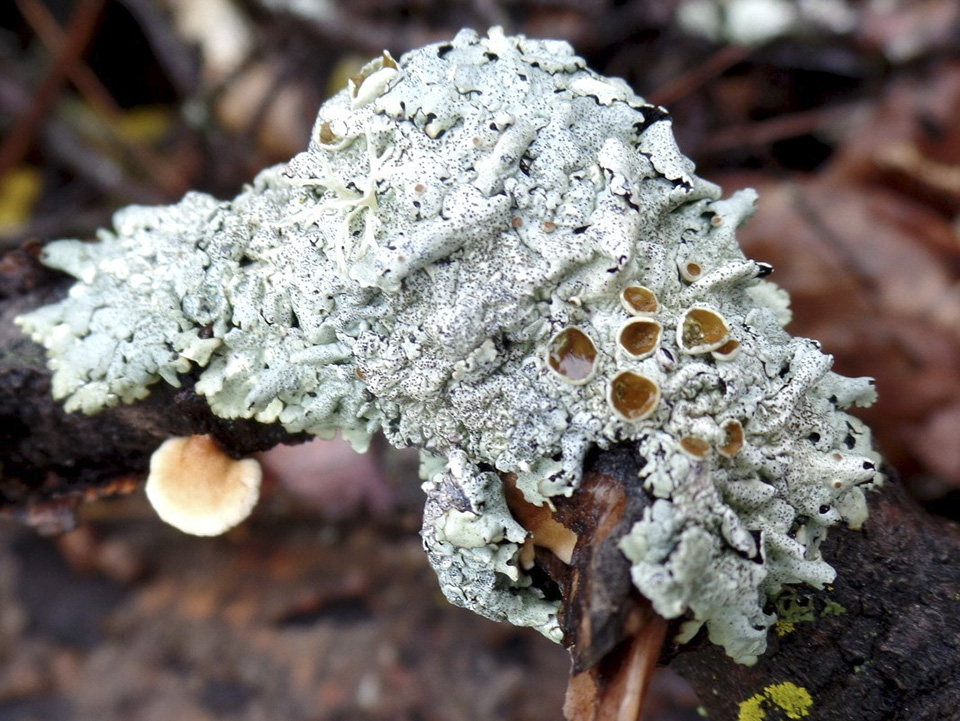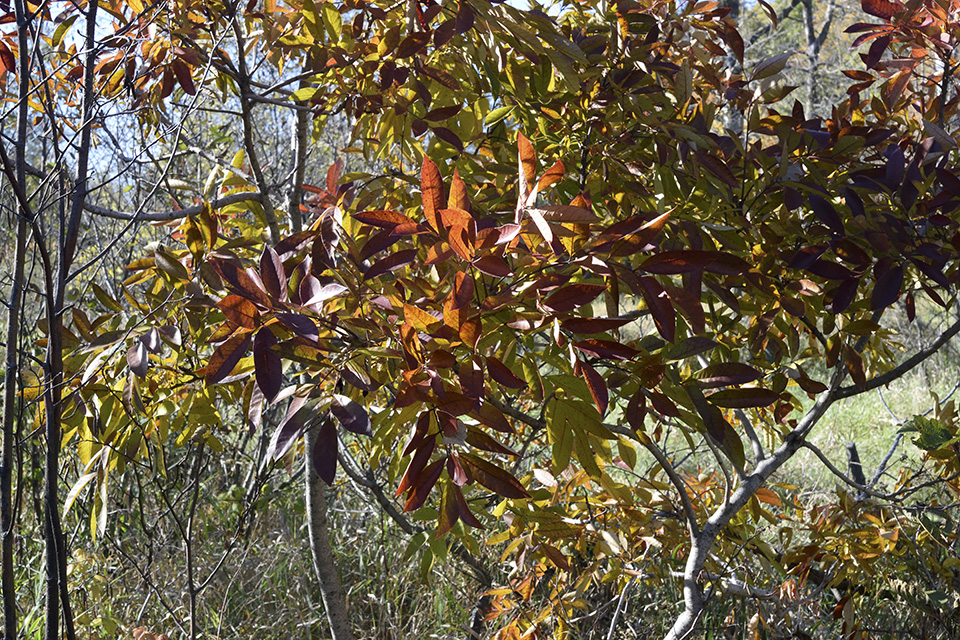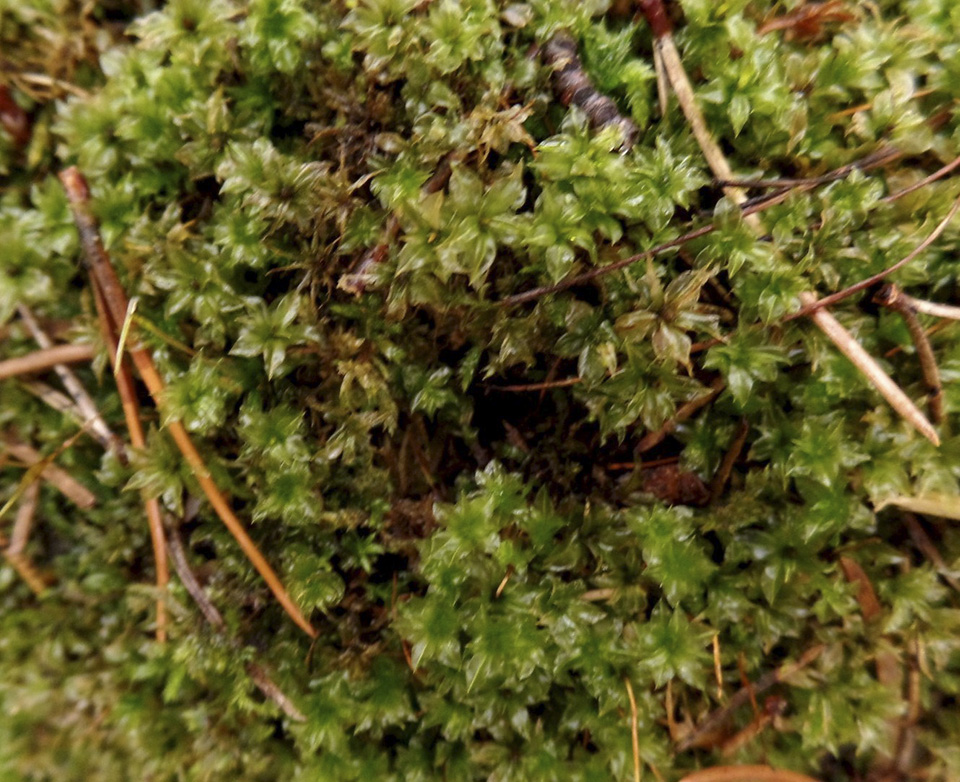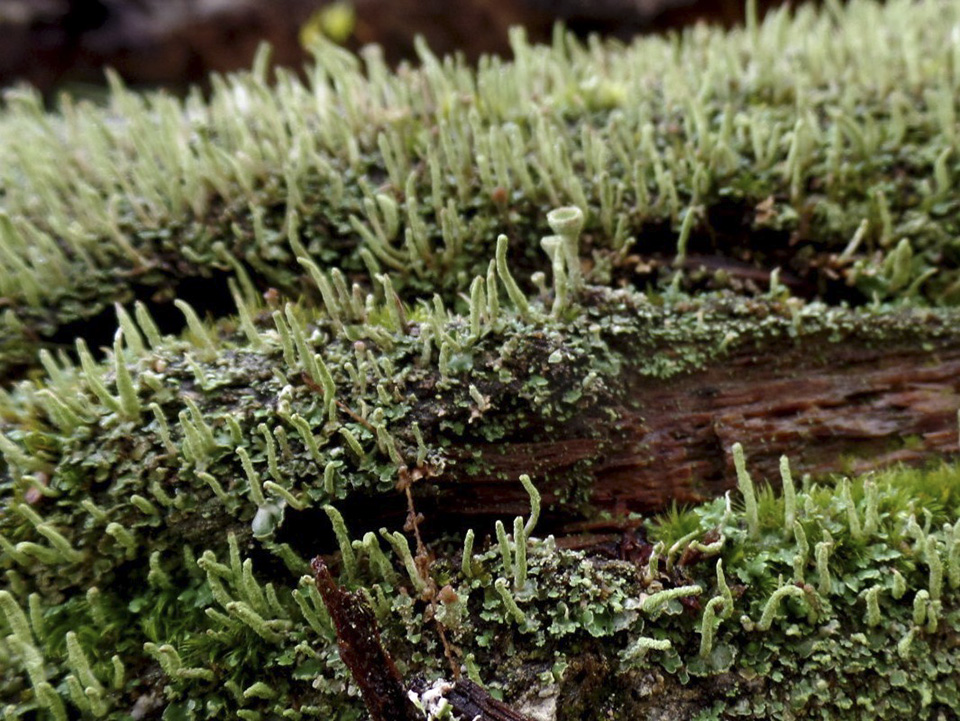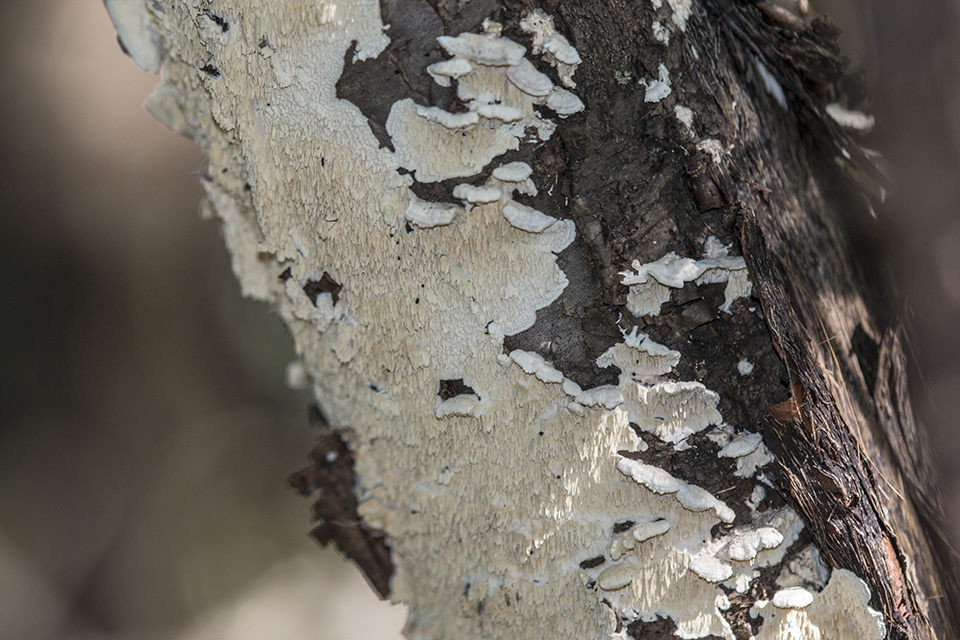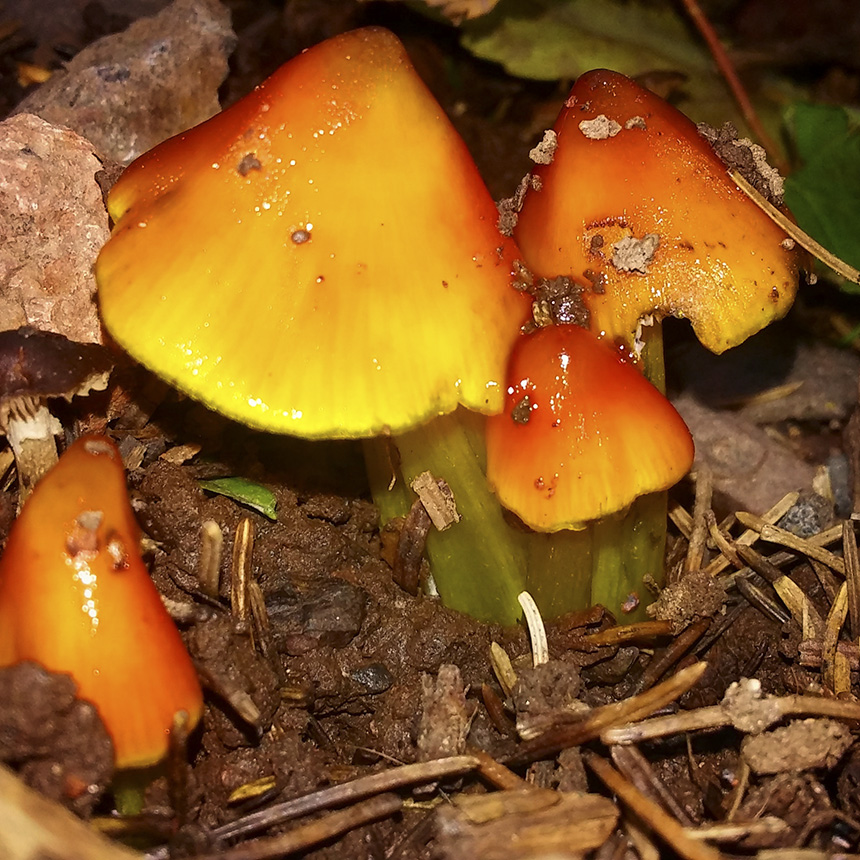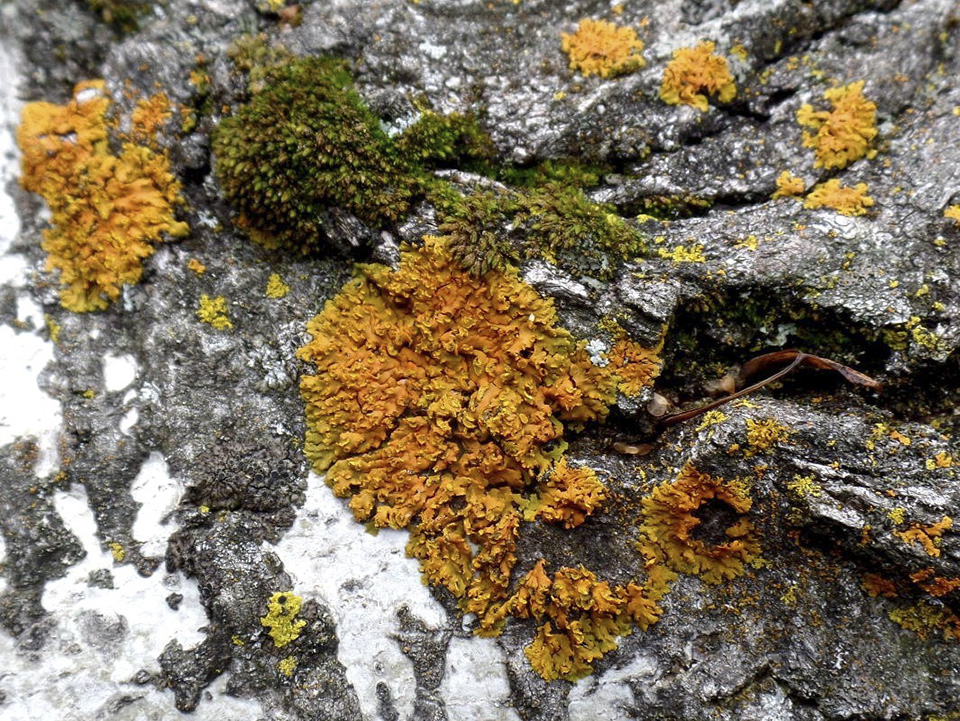American Starburst Lichen (Imshaugia placorodia) is found in the United States from Maine to Minnesota and south along the foothills of the Appalachian Mountains, in the northern Great Plains, the central and southern Rocky Mountains, and the southern Intermountain Region in the southwest. It grows on the bark of pine trees. It is almost restricted to pitch pine, jack pine, and Virginia pine in the east, and to ponderosa pine and Douglas fir in the west. It is rarely found on oak. In Minnesota it is found only on jack pine.
American Starburst Lichen is identified by its leaf-like growth; grayish-green upper surface that usually has black, pinprick-like dots across the surface and on the margins; brown, spore-producing cups that are sometimes abundant enough to conceal the leaf-like base; and its occurrence restricted to jack pine bark.
http://www.minnesotaseasons.com/Fungi/American_Starburst_Lichen.html

